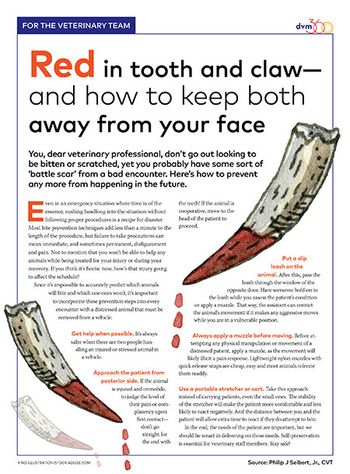
You, dear veterinary professional, dont go out looking to be bitten or scratched, yet you probably have some sort of battle scar from a bad encounter. Heres how to prevent any more from happening in the future.
Phil Seibert, CVT, is based in Calhoun, Tenn. He specializes in OSHA issues and is the author of The Complete Veterinary Practice Regulatory Compliance Manual (5th Edition).

You, dear veterinary professional, dont go out looking to be bitten or scratched, yet you probably have some sort of battle scar from a bad encounter. Heres how to prevent any more from happening in the future.

Governmental regulation expert Philip Seibert helps a veterinary practice know where to turn when a practice owner is misinformed on the legalities of overtime.

Use this quick safety cartoon to stay current on safe handling at your veterinary practice.

Advanced medicine gives pets a chance in the fight against pet cancer, but it's important to protect yourself and your employees when dealing with these dangerous drugs.

Train early and often to help new team members learn procedures and stay safe. Here's what your program should cover.

Starting from scratch can be a daunting task, but it also means you can create a well-organized, comprehensive safety plan for your veterinary practice. Here's how.

Learn how to protect your staff and keep your practice safe from robbery and violence late at night.

Don't put your practice-or your veterinary team-at risk. Take these steps to fend off criminals before they strike.

They help keep your practice germ-free, but these products can do more harm than good if used improperly.

It's one of the most common chemicals in use today, but you'll need to take precautions before exposing your team members to formaldehyde.

Find out what OSHA wants you to do when a chemical bottle warns you to provide adequate ventilation.

Team members running work errands for your veterinary practice must be licensed and their cars must be in good shape. Otherwise, guess who's on the hook for liability?
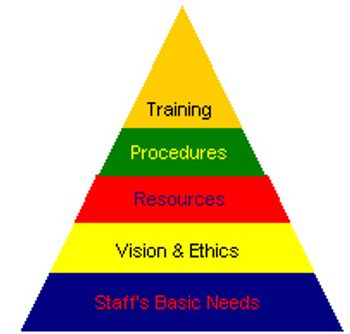
We have all heard of the carrot or stick approach to horse training, or the 2 Ã- 4 approach of getting a mule's attention before training. While these ideas are entrenched in our heritage, they are not generally used; rather, alternatives are sought that will serve the same purpose.

For any practice, program or promotion to succeed, regardless of the objectives, the people who are responsible for carrying out the details of the program must be educated on what they are expected to do. That is the core definition of training - educating the force on what is expected of them.
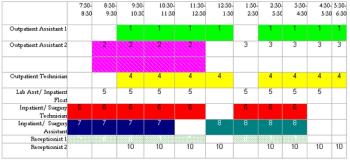
The phrase most often heard during a recent on-site consultations was "We're so short staffed." That had become the justification for the pace of work. After reviewing the schedule and the percentage of income spent on staff salaries and benefits, it was obvious that the hospital was not really short-staffed, but it is mis-staffed.

The Board of Veterinary Medicine regulates and licenses people practicing veterinary medicine in the State. Although there are professional standards defining "veterinary-client-patient relationship" and proper prescribing of medications, it falls to the Board of Pharmacy in the state to regulate how prescription medications are dispensed to the general public.

The whole issue of ordering, storing, dispensing and recording controlled drugs can be of the most confusing in the veterinary practice. Since it's inception in 1970, the Controlled Substance Act has placed specific mandates on those who manufacture, distribute, administer or dispense drugs that are deemed addictive or abusive.

Since most OSHA inspections are the result of an employee (or former employee) complaint or a reported injury or illness, very often the inspection will focus on a specific area of concern within the workplace. Just as medical professionals specialize, the inspector's expertise in occupational health or general safety rules will also play a role in what portions of a hospital safety program are evaluated.

Since most OSHA inspections are the result of an employee (or former employee) complaint or a reported injury or illness, very often the inspection will focus on a specific area of concern within the workplace. Just as medical professionals specialize, the inspector's expertise in occupational health or general safety rules will also play a role in what portions of a hospital safety program are evaluated.

Whether the economy is good or bad, it seems we're always short staffed. So what do we do about it? First, you must develop a strategy. Remember, manpower is a resource just as money is.
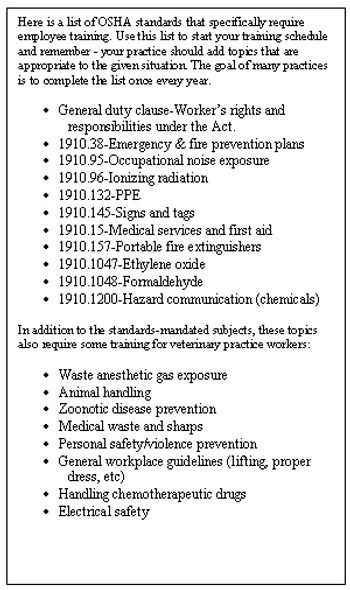
The Occupational Safety & Health Administration (OSHA) was created under the Department of Labor to enact and enforce those measures necessary to ensure that every American has a safe and healthy work environment. These "rules" are known as standards and are published in Chapter 29 of the Code of Federal Regulations.

Lightning strikes. Darkness falls. Can team members see to walk your halls?

Heroes need not apply. In an emergency evacuation, your employees should focus on saving themselves.

Traditional, CR, or DR: Keep those safety garments and OSHA procedures in place.

If you're sharing space with another facility, make sure you ensure everyone's safety.

Don't let your fear of OSHA give scam artists an opportunity.

Some people believe that radiation from DR or CR is not as dangerous as that from regular radiographs and that safety precautions aren't as important. They're wrong.
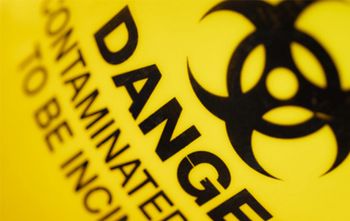
Remind your team what goes in medical waste and what goes in the dumpster.

Operate by the book when it comes to the Fair Labor Standards Act

Keep your practice safe with security cameras, safety procedures, and an early warning system.

Published: May 7th 2008 | Updated:

Published: January 1st 2011 | Updated:

Published: January 1st 2012 | Updated:
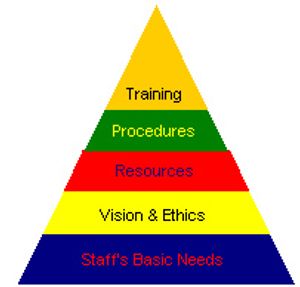
Published: August 1st 2010 | Updated:

Published: August 1st 2010 | Updated:
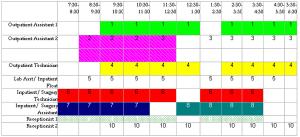
Published: August 1st 2010 | Updated: